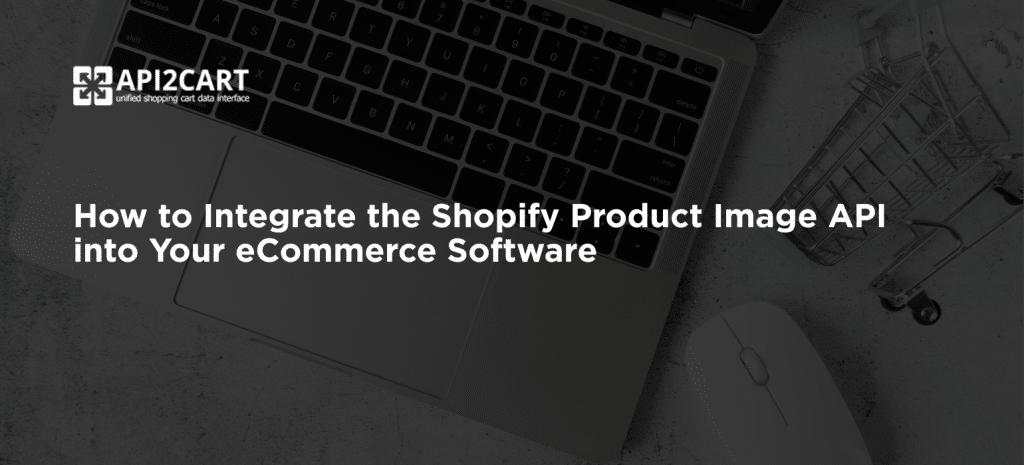
When building or customizing an online store on Shopify, organizing products into the right categories is essential for a smooth user experience and efficient store management. As a software developer working with Shopify, understanding product categorization, from Shopify’s built-in collections to custom taxonomies, can help streamline development, enhance searchability, and improve customer navigation.
In this guide, we’ll break down Shopify’s product categorization system, including collections, tags, and metafields, to help developers optimize store architecture. Whether you’re building a custom storefront, integrating with an external system, or automating product organization, this article will provide the technical insights you need. Let’s dive into the Shopify product categories list and explore how you can leverage them in your development projects.
The Main Methods for Shopify Product Categories List
When working with Shopify, categorizing products effectively is essential for both user experience and store management. For software developers, there are several methods available to organize products into categories. These methods include collections, tags, product types, vendors, and metafields. Below are the main methods for managing Shopify product categories:
1. Collections:
Collections are the primary method of grouping products in Shopify. There are two types of collections:
- Manual Collections: Developers can manually add products to a collection through the Shopify admin panel. This is best for small-scale categorization or if a collection needs specific products not determined by conditions;
- Automated Collections: These collections automatically include products based on specific conditions, such as product type, price, or tags. Automated collections are ideal for large stores with many products, allowing categories to be dynamically managed.
2. Tags:
Tags are keywords or phrases that can be assigned to products for grouping and filtering. While collections are more static, tags offer flexible, ad-hoc grouping:
- Tags can be used in combination with automated collections to filter products. For example, a product could be tagged as "summer" or "sale," and those tags could be used to create automated collections that reflect seasonal or promotional products;
- Developers can also create custom filters in the storefront using tags, allowing customers to narrow down product searches based on tag-specific categories.
3. Product Types:
Product types categorize products based on their general category or characteristics. For example, "T-shirt" or "Shoes" might be used as product types:
- Product types can be used to organize products in both the Shopify admin and on the storefront. Developers can display products by product type in collections or use Liquid to filter products by their product type.
4. Vendors:
Vendors refer to the suppliers or brands of products. This method allows categorization based on the company or manufacturer that provides the product:
- Developers can create vendor-specific collections or filters on the storefront to display products from specific vendors. This is particularly useful for multi-brand stores;
- Using the Shopify API, developers can query products based on their vendor and create custom sorting mechanisms.
5. Metafields:
Metafields allow you to extend Shopify’s default product information by adding custom fields. These fields can be used for additional categorization, such as defining custom categories or properties that don’t fit into the other structures:
- Metafields can be used to store additional product details or custom category attributes (material type, seasonality, special promotions);
- Software developers can access and display metafield data on the storefront using Liquid, allowing for advanced filtering or sorting based on custom criteria.
6. Smart Collections with Custom Rules:
Smart collections in Shopify use rules based on product data (price, product type, tags, vendor, etc.) to automatically assign products to collections. Developers can create dynamic categories with flexible rules that adapt as product data changes:
- Developers can define custom rules for categorizing products dynamically. This is ideal for stores with frequently changing inventories, where products need to be categorized based on real-time attributes.
For software developers, Shopify offers a variety of methods to organize products into categories, each with its own use case. The flexibility provided by collections, tags, metafields, product types, and vendors allows developers to implement complex categorization systems that meet the needs of both store owners and customers. Understanding how to leverage these tools in the Shopify API and Liquid can lead to more dynamic, scalable, and efficient solutions for managing product data.

Optimizing Categorization for Shopify Product List for Efficiency
Optimizing the categorization of Shopify product lists is crucial for improving both the performance and user experience of an eCommerce store. For software developers working with Shopify, efficient categorization can streamline product management, enhance search functionality, and improve the site’s speed and SEO. Here are some best practices for optimizing Shopify product categorization:
1. Use Automated Collections for Dynamic Categorization:
Automated collections allow you to categorize products based on specific rules, such as product type, tags, or price ranges, without manual intervention. This is especially useful for large stores with frequent inventory updates:
- Use multiple conditions: Combine multiple criteria (tags, product type, price) to create more precise collections. This minimizes overlap and ensures relevant products are grouped together;
- Avoid too many conditions: Having too many conditions in an automated collection can slow down processing time, especially if your store has a large product catalog.
2. Organize Products Using Tags Strategically:
Tags provide an additional layer of categorization. While collections organize products at a higher level, tags are great for more granular filtering and sorting, such as by color, size, or special features ("eco-friendly", "new arrival"):
- Limit the number of tags: Over-tagging can make searching and filtering inefficient. Focus on the most important attributes for better filtering without cluttering the system;
- Standardize tags: Use a consistent naming convention for tags to prevent confusion and improve filtering accuracy. For example, use "small", "medium", and "large" consistently across products.
3. Leverage Metafields for Custom Product Categorization:
Metafields allow you to add custom attributes to products, giving you more control over categorization. This is useful when Shopify’s built-in features (tags, collections) are insufficient to categorize products in a meaningful way:
- Keep metafields lightweight: Store only necessary data in metafields to avoid slow performance. Avoid adding too many custom fields that are rarely used;
- Use metafields for SEO: You can store metadata such as product descriptions or custom titles in metafields for better SEO optimization.
4. Organize Product Types and Vendors Effectively:
Product types and vendors are built-in ways to categorize products at a high level. While these are more rigid than tags or metafields, they provide a strong foundational structure for organizing products:
- Define clear product types and vendors: Ensure your product types and vendor names are clear and meaningful, so customers can easily navigate your store; Combine product types with collections: Use collections to break down product types further into subcategories.
5. Optimize for Search and Filtering Efficiency:
Search and filtering are critical for large product catalogs. Categorization methods, including collections, tags, and metafields should be designed to support efficient search and filtering:
- Implement faceted search: Enable filtering by tags, product types, vendors, and metafields. This allows users to narrow down search results based on their preferences;
- Avoid redundant filters: Use unique categories and attributes to prevent overlap in filtering options, which can confuse customers and slow down site performance;
- Test search performance: Ensure that search and filter functionality doesn’t slow down the site, especially on pages with a large number of products. Optimize search queries and limit the number of filters.
6. Optimize for SEO with Categorization:
Categorization is key for SEO. Shopify’s product pages, collections, and categories should be optimized to help search engines better understand the structure of your site and index products appropriately:
- Use SEO-friendly URLs: Ensure collection and product URLs are descriptive and include keywords (/collections/men-t-shirts);
- Optimize metadata for collections: Use unique meta titles and descriptions for collections and product types to improve search visibility;
- Add schema markup: Implement structured data on product pages to help search engines display rich snippets (prices, availability) in search results.
7. Automate Categorization for Large Catalogs:
For stores with a large inventory, automation can help maintain an efficient categorization system. Shopify apps or custom scripts can automate processes like assigning products to collections, tagging them, or updating metafields:
- Use Shopify Flow or custom scripts: Shopify Flow (for Plus stores) can automate product categorization based on conditions such as price changes, inventory status, or seasonal changes;
- Regularly review automation rules: As your store evolves, update the automation rules to account for new product types, changes in inventory, or promotions.
Optimizing product categorization in Shopify is essential for maintaining a scalable, user-friendly, and high-performing online store. For developers, leveraging automated collections, tags, metafields, and smart filtering techniques can ensure an efficient categorization system that enhances both the customer experience and store performance.
By following these best practices, Shopify store owners and developers can optimize their product lists, improve search and filtering functionalities, and maintain a streamlined catalog management process.

Using API2Cart for Shopify Product Categories List
Accessing product categories in Shopify isn’t as straightforward as in other eCommerce platforms because Shopify doesn’t use a traditional category tree. Instead, it relies on collections, product types, and tags, which can complicate integration logic, especially if you're building multi-platform tools. That’s where API2Cart becomes a powerful solution for software developers.
API2Cart is a unified API that allows you to connect your software to 60+ eCommerce platforms and marketplaces, including Shopify, Magento, WooCommerce, BigCommerce, OpenCart, PrestaShop, and others, at once, through a single integration. For developers, this means you can retrieve product categories from Shopify and other platforms using a standardized method, without worrying about Shopify-specific data structures.
Using this service, developers can easily interact with Shopify product categories, collections, and metadata. You can fetch product lists, create collections, or assign products to specific categories using API calls.

How API2Cart Helps Developers Optimize Shopify Product Categorization
- Bulk Management:
- Automation:
- Tagging products based on specific attributes (adding a "Summer Sale" tag to products within a certain price range);
- Creating collections based on dynamic conditions (products added in the last 14 days or products marked as "new arrivals");
- Updating collection membership when products change tags, type, or other attributes.
- Cross-Store Management:
- Improved Data Analysis and Reporting:
API2Cart makes it easy to manage a large number of products, collections, and categories in bulk. Instead of manually updating each product in the Shopify admin panel, developers can use API calls to update product categorizations in bulk. This is particularly helpful for large stores with many products.
With API2Cart, developers can automate categorization processes, such as:
For developers working with multiple Shopify stores or other eCommerce platforms, API2Cart provides a centralized way to manage categorization across stores. You can sync products and categories between stores, making it easier to maintain consistent categorization across different platforms.
API2Cart enables developers to pull data about product categories, collections, tags, and other attributes, making it easier to generate reports and analyze product performance based on categorization.
API2Cart is a powerful tool for developers looking to manage Shopify product categories list programmatically. With its ability to create, update, and manage collections, tags, and product data, API2Cart simplifies the process of automating and optimizing product categorization. By leveraging this API, developers can streamline product management tasks, improve site performance, and enhance the customer shopping experience through better-organized categories.
For developers, API2Cart provides the flexibility to create custom categorization workflows, ensuring products are always appropriately categorized, whether manually or automatically, based on predefined criteria. To try all the functions provided by API2Cart for free, you need to book a FREE demo with our managers, who will help you register your account on our service.
Conclusion
Understanding and effectively managing Shopify product categories is essential for creating a seamless and efficient eCommerce experience. For software developers, Shopify offers a flexible system that leverages collections, tags, product types, vendors, and metafields to categorize products. By mastering these tools, developers can build dynamic, scalable, and user-friendly solutions tailored to a store’s needs.
Ultimately, an optimized product categorization system ensures a smoother customer journey, higher conversion rates, and better store management. By leveraging the right categorization methods and tools, Shopify developers can create robust, high-performance eCommerce platforms that are both user-friendly and maintainable.
FAQs
How can API2Cart help manage product listings on Shopify?
API2Cart allows SaaS providers to easily manage product listings on Shopify and other eCommerce platforms. Using methods like product.add, product.update, and product.list, you can create, update, and synchronize product information such as titles, descriptions, images, and categories across Shopify and 60+ other platforms. This simplifies the product management process for eCommerce software vendors and accelerates integration.
What are the main benefits of using API2Cart for managing Shopify product listings?
API2Cart offers several key benefits for managing product listings on Shopify, including easy integration with Shopify and 60+ other eCommerce platforms, real-time synchronization of product data, and the ability to save up to 80% of developer time. With API2Cart, software providers can automatically update product listings across multiple platforms, improving efficiency and reducing manual work. Learn more about how API2Cart can streamline your Shopify integration.



